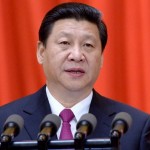ASIA MEDIA WRITES: On the whole, the international media has reacted to China’s climate improvement agreement with understandable cynicism. Nations tend to talk a lot and do much less. But the agreement recently reached at the 2014 APEC summit in Beijing might prove the beginning of the real deal. People who live in China’s big cities know that pollution is no laughing matter.
Indeed, in his opening speech at the summit, China President Xi Jinping pointed with evident pride at the suddenly blue sky in Beijing during the summit period, and said it was his wish that the sky could remain blue after the summit. It didn’t.
In the following days, according to the air pollution index published by the US embassy, the air quality in Beijing deteriorated badly and reached “hazardous” On Nov 19th. Still, President Xi’s remark indicated the government is well aware that the air pollution is one of the biggest challenge faced by China.
Beijing is now infamous for its smog. On many days, people have to wear masks to protect themselves; tall buildings and skyscrapers even “disappear” in the smog. According to China’s Ministry of Health, “pollution has made cancer China’s leading cause of death; ambient air pollution alone is blamed for hundreds of thousands of deaths each year.”

The causes of pollution are various but among many factors, coal is the most important. Unlike developed countries such as the US, coal is the most important source of energy in China; it provides 80 percent of its electricity and 70 percent of its total energy. Although it is cheap, burning coal generates much more pollution than natural gas and gasoline.
The coal overhang is especially severe in the north, where many steel and other heavy industry factories rely heavily on the substance, and many cities need it to generate heating for residents during the bitter winter. In recent years, even as cities in Beijing have seen most residents moving from heating via coal to natural gas, factory fuel use remains the same: the cost for steel factories in surrounding areas like Hebei, Inner Mongolia, and Shandong to quit the coal habit is staggering, and these high-pollution, low-efficiency factories count for a big part of the economy and employment in these provinces.
The second major pollution source is automobiles. Although the total number of vehicles in China is still lower than the U.S., a huge number of vehicles, especially many commercial trucks and buses, are of inferior quality and pump out much more pollution than domestic passenger cars, not to mention comparable large vehicles in developed countries under much stricter emission standards.
Realizing the severity of the pollution problem, the Chinese government is trying hard to solve the problem, though it might take decades. It is now importing natural gas from Russia, the Middle East, and other places to reduce its reliance on coal, and promoting new energy such as solar and wind with subsidies for the industrial sector. It is seeking to transform high-pollution heavy industries into more high-tech, low-pollution industries. Under the passenger vehicle category, the government is now providing subsidies for electric cars, and making much stricter standard for automobile exhaust.
Solving the air pollution will definitely take years, even decades, but the cost of pollution becomes too high to ignore. The international media has it wrong this time: China is not at all insincere about wanting to clean its air.
